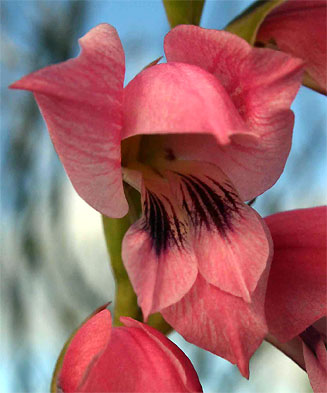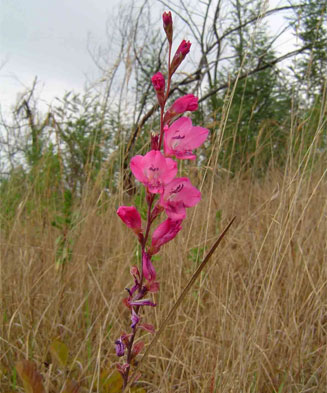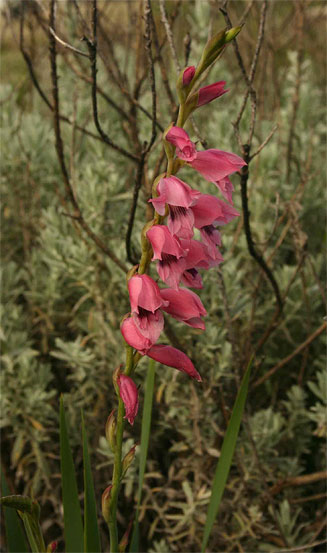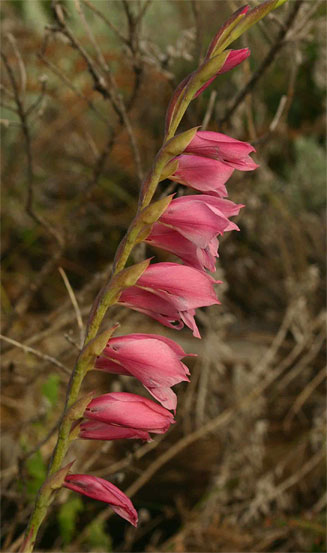|
Gladiolus crassifolius (Thick-leaved gladiolus)
[= Gladiolus dieterlenii]
kxahla-e-nyenyane, khahla-e-nyenyane [South Sotho]; sidvwana
[Swazi]; igulusha, ingangulazi [Zulu] Life
> eukaryotes >
Archaeoplastida >
Chloroplastida
>
Charophyta > Streptophytina > Plantae (land plants)
> Tracheophyta (vascular plants) > Euphyllophyta > Lignophyta (woody plants)
> Spermatophyta (seed plants) > Angiospermae (flowering
plants) > Monocotyledons > Order: Asparagales
> Family: Iridaceae > Genus:
Gladiolus
|
|
|
 |
 |
|
|
|
|
|
Gladiolus crassifolius flowering near
Connemara Dam, World's View, Troutbeck, Zimbabwe. [photo Bart Wursten ©,
Flora
of Zimbabwe] |
Gladiolus crassifolius flowering in
Chinyakwaremba, Vumba, Zimbabwe. [photo Bart Wursten ©,
Flora
of Zimbabwe] |
|
|
|
|
|
 |
 |
|
|
|
|
|
Gladiolus crassifolius flowering near
Connemara Dam, World's View, Troutbeck, Zimbabwe. [photos Bart Wursten ©,
Flora
of Zimbabwe] |
|
|
Information from Goldblatt and Manning (1998).
Distribution and habitat
Has a broad distribution that includes soutwestern
Tanzania, Malawi, Mozambique, Zimbabwe, western Angola, South Africa, Lesotho
and Swaziland. In southern Africa, it occurs from Limpopo Province, south to
Elliot in the Eastern Cape. It also occurs to the west as far as Krugersdorp and
Rustenburg. Plants grow in grasslands on well-drained rocky hillsides.
Life cycle
- A geophyte, with corms measuring 18-30 mm in diameter.
- Flowers in late summer, mainly from February to March but can be earlier
or later at higher elevations. In tropical Africa it usually flowers from
April to June but also from August to November. Flowers particularly after
fires.
- Seeds eliptic, measuring 4-6 mm long by 2.5-4 mm wide, broadly winged.
Ecological interactions
Pollinators
- Long-tongued bees feed on nectar and pollen, including:
- Amegilla capensis in the Drakensberg
- Long-tongued flies including:
- Prosoeca sp. (Nemestrinidae) in Zimbabwe
Derivation of name
crassifolius has a Latin derivation and means
thick-leaved, which refers to the strongly ribbed, thick, leathery leaves.
Links
Publications
- Goldblatt P. and Manning J. 1998. Gladiolus in Southern Africa.
Fernwood Press, Vlaeberg, Cape Town.
Text by Hamish Robertson |
